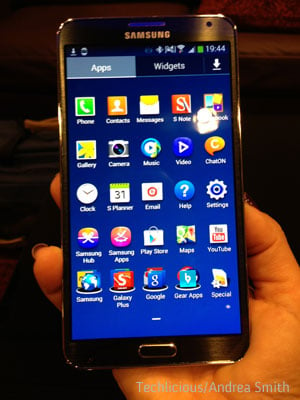Cool Gadgets Emblem Inventory Illustrations, Photos & Vectors
 You can spend your cash on all sorts of weird gadgets, from Bluetooth-enabled toothbrushes to toasters that print your selfie in your breakfast. Nanoleaf has been a frontrunner in the smart home decor subject since its triangular Aurora lighting panels became one of the most interactive beauties to grace anybody’s residence walls. Nanoleaf adopted up the triangular techno vibe with a equally interactive, however much more versatile, sq. design called Canvas. These light squares do every thing from react to sound, mirror colours playing on a screen, help contact-based mostly games, and even reply to good house management gestures. Beyond all of this, they are modular, permitting you to construct some actually gorgeous (and unique to you) mild wall designs.
You can spend your cash on all sorts of weird gadgets, from Bluetooth-enabled toothbrushes to toasters that print your selfie in your breakfast. Nanoleaf has been a frontrunner in the smart home decor subject since its triangular Aurora lighting panels became one of the most interactive beauties to grace anybody’s residence walls. Nanoleaf adopted up the triangular techno vibe with a equally interactive, however much more versatile, sq. design called Canvas. These light squares do every thing from react to sound, mirror colours playing on a screen, help contact-based mostly games, and even reply to good house management gestures. Beyond all of this, they are modular, permitting you to construct some actually gorgeous (and unique to you) mild wall designs.
There is no scarcity of contenders in this class, however the Final Ears (UE) Megaboom speaker ($300) stands out as a stylin’ audio accessory that’s waterproof, comes in 4 colour …
Continue Reading The arrival of Christmas has made everyone from the mobile phone world to lure the mobile phone users with profitable contract deals with gives like presents and advantages along the lower within the worth of the mobile phone. If you’re on the lookout for some attention-grabbing reward to current your family members on Christmas, the contract phone deals serves the most effective present at current as mobile phones are some of the wanted object for the folks of all ages no matter be their gender and that makes the contract cellphone deals with gift a lucrative supply to clinch. The Contract Cellphone With Free Presents have some shocking gifts like LIQUID CRYSTAL DISPLAY TV’s, Laptops, Sport Console and different items of the same line. To get the perfect contract phone with gift evaluate what all these mobile phone service suppliers are offering at UK On-line Cellphone Shop and examine to …
The arrival of Christmas has made everyone from the mobile phone world to lure the mobile phone users with profitable contract deals with gives like presents and advantages along the lower within the worth of the mobile phone. If you’re on the lookout for some attention-grabbing reward to current your family members on Christmas, the contract phone deals serves the most effective present at current as mobile phones are some of the wanted object for the folks of all ages no matter be their gender and that makes the contract cellphone deals with gift a lucrative supply to clinch. The Contract Cellphone With Free Presents have some shocking gifts like LIQUID CRYSTAL DISPLAY TV’s, Laptops, Sport Console and different items of the same line. To get the perfect contract phone with gift evaluate what all these mobile phone service suppliers are offering at UK On-line Cellphone Shop and examine to …